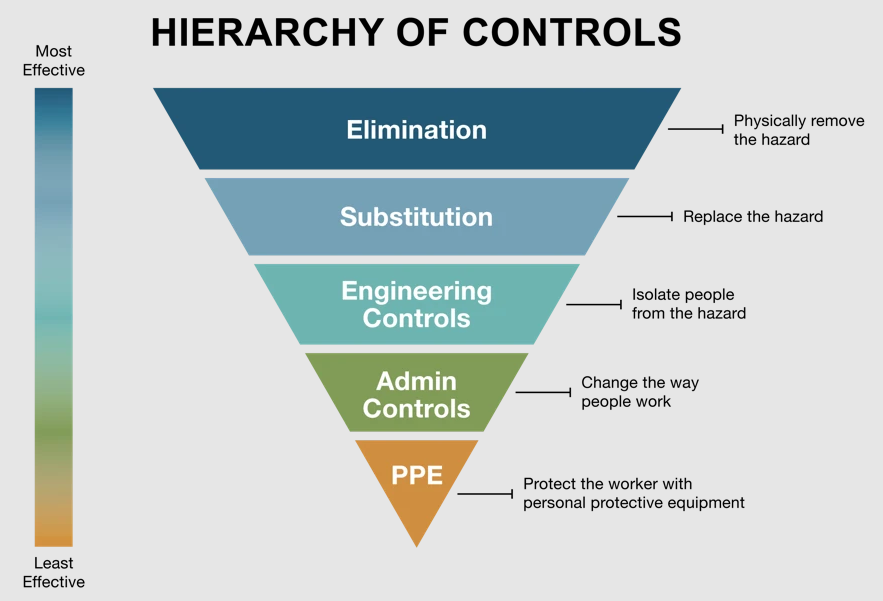Emory has a commitment to its faculty, staff, and students to keep them safe while conducting research. A “Hierarchy of Controls” is used to minimize employee exposure to hazards. The control methods at the top are perceived as more protective than those at the bottom. Eliminating the hazard is the most effective control method, however it may not always be feasible. When eliminating a hazard or substituting it with a non-hazardous alternative is not possible, the next most effective method is to prevent exposure by using an engineering control. An example of an engineering control is a chemical fume hood. Chemical fume hoods prevent a researcher’s exposure by pulling contaminated air up and away from the breathing zone.
Next, administrative controls provide protection by changing the way people work. A standard operating procedure (SOP) that advises ordering the minimum amount of a toxic chemical needed reduces risk and is an example of an effective administrative control.
The final method used to protect against hazards is wearing personal protective equipment (PPE) such as gloves, eye protection and respirators. PPE may be combined with engineering controls. If an airborne contaminant is so hazardous that a chemical fume hood alone is insufficient to provide adequate protection, a respirator or supplied air can also be used.
How does the Environmental Health and Safety Office (EHSO) know if controls in place are adequate for your research? EHSO conducts assessments to evaluate potential exposure and compares these values to established standards. If an employee’s exposure to a hazard is close to or above established limits, EHSO will advise you about the controls needed to achieve proper protection.
Contact your Research Safety Building Liaison if you have any questions.

